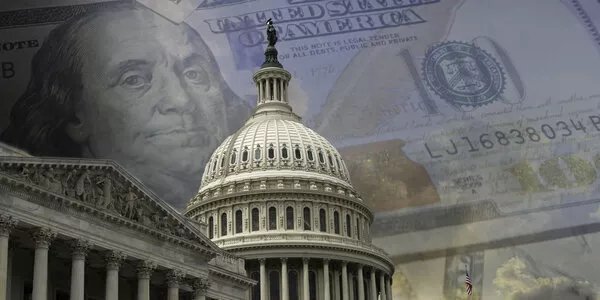
Flash Update - Less Than Zero – what on earth happened to oil prices?
Oil prices were already weak ahead of the emergence of worries about the coronavirus. At the start of the year, the Energy
Information Agency (EIA) showed oil supply outstripping demand (see right-hand chart) with shale producers ramping up US output to all-time highs.
By the time China announced the Hubei lockdown on the eve of the lunar New Year holiday, Brent prices had fallen 8% since end-December. As the spread of the pandemic gathered pace in the following weeks, oil prices continued their decline as
traders realised that restrictions on activity and travel would sharply curtail oil demand.
This shift in the market put pressure on OPEC and its allies, led by Russia, to agree output cuts at their early-March meeting.
However, hopes were dashed after Russia declined to cut its production further. Saudi Arabia then declared a price war by raising the kingdom’s output by 25%, hoping to pressure US shale producers into cutting theirs.
The resulting imbalance in the oil market has been severe. It now looks as if the coronavirus-driven collapse in consumption will see a reduction of between 20 and 30 mb/d this month. By end March, Brent was down 65% year-to date, prompting
President Trump to broker another emergency meeting between OPEC and Russia. However, negotiations were arduous and it was hardly surprising that the 9.7 mb/d cuts finally agreed on April 12th failed to stabilise the market.
With refinery demand down 25% in recent weeks, storage capacity has been filling up rapidly, especially in the United States where output has only dipped 7% from March’s record highs. In Cushing, Oklahoma where West Texas Intermediate crude –
the basis of US futures trading – is stored, tanks were around 80% full on April 17 according to the EIA. And Plains All-American Pipeline – a large US oil transporter – expects all available capacity to be full by early May.
This was the dynamic which pushed US crude prices into negative territory. Holders of the oil futures contracts which expired on April 21 are obliged to take physical delivery of crude in May. With no capacity left, traders were unable to arrange for storage of the oil they had undertaken to buy and were forced to offload their contracts at heavy losses. On Monday April 20, prices fell towards zero and then plunged into negative territory – in effect the forced sellers had to pay buyers to take on their contracts. Once the dust settled at expiry, prices had recovered over $50 from Monday’s low but still settled at the lowest price since 1986.
Bottom Line. In coming weeks, this dynamic is unlikely to change. Coronavirus lockdowns and travel restrictions will keep oil demand depressed and output is unlikely to fall far enough to stabilise the market. Moreover, limited storage capacity will keep traders nervous about delivery problems, meaning that oil prices are likely to remain low and extremely volatile for now. It is only once lockdowns have eased, production cuts have been implemented and the surplus oil in storage has been shipped for refining that the oil market will be able to stabilise.





